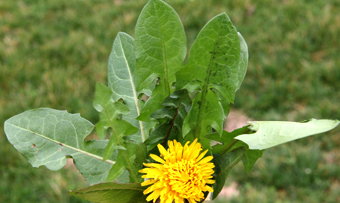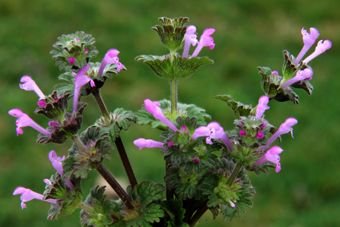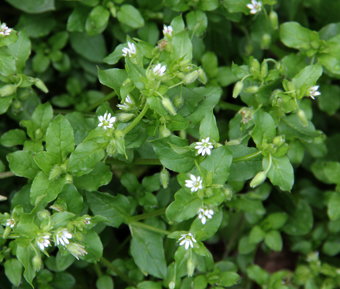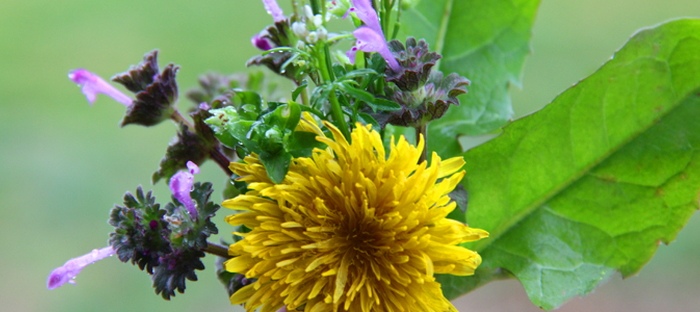Our ancestors knew what to do. After a long, cold winter with no fresh foods and garden produce still months away, they foraged edible, early spring plants and brought some needed nutrients and flavor into otherwise boring and lack-luster winter fare. Readers might be surprised at the variety of green edibles available in late winter and here in west Kentucky, we have some interesting choices.
I'm fortunate to live in a rural area with abundant wild plants. My own home sits on acreage where there is no pesticide use and there's no chance of agricultural run-off contaminating my property. If you are planning to forage from the wild, please be aware that your plants may have been dosed with a 'salad dressing' that you might not want. Pesticides, automobile exhaust and agricultural wastes do not make worthy condiments in this spring feast. Choose your foraging area carefully.
 Dandelions (Taraxacum officinale) are common just about everywhere and were frequently used by our ancestors, but most of us do not know the best way to harvest or use them. They are high in iron, which was a boon for winter-weary pioneers. The first rule is, if your plant is blooming, the leaves are too old and will be bitter. Dandelion leaves do have a bit of a 'bite' to them, but when they are older, the bite is more pronounced and unpleasant. Pick the young leaves and use them as you would spinach. Soak the leaves in a bowl of salty water after washing. This helps dislodge any insects that may still be hitching a ride on your feast. The leaves are great in stir-frys, quiche and pestos. I also wrote an article a couple of years ago using the flowers to make jelly. It was labor-intensive, but turned out scrumptious.
Dandelions (Taraxacum officinale) are common just about everywhere and were frequently used by our ancestors, but most of us do not know the best way to harvest or use them. They are high in iron, which was a boon for winter-weary pioneers. The first rule is, if your plant is blooming, the leaves are too old and will be bitter. Dandelion leaves do have a bit of a 'bite' to them, but when they are older, the bite is more pronounced and unpleasant. Pick the young leaves and use them as you would spinach. Soak the leaves in a bowl of salty water after washing. This helps dislodge any insects that may still be hitching a ride on your feast. The leaves are great in stir-frys, quiche and pestos. I also wrote an article a couple of years ago using the flowers to make jelly. It was labor-intensive, but turned out scrumptious.
 Dead nettle (Lamium purpurem) is an early spring plant that isn't actually a nettle. It is a member of the mint family, however it doesn't taste like mint. It also has none of the stinging properties of the 'regular' nettle, thus the 'dead' designation. It forms vast colonies and the little purple flowers make the whole thing look like a carpet. Dead nettle is rich in iron, fiber and antioxidants, but the fuzzy texture isn't agreeable with many of us. Best to blend it into smoothies and use the leaves in stir-frys and soups. It has mild antibacterial and antihistamine properties and hikers can take note that crushed leaves soothe cuts, scrapes and insect bites. while the species plant is considered a weed, there are cultivated varieties that gardeners often use as ground covers in their gardens. There is a similar looking plant called henbit that may cause some confusion, but the good news is, they're both quite edible and on the foraging menu.
Dead nettle (Lamium purpurem) is an early spring plant that isn't actually a nettle. It is a member of the mint family, however it doesn't taste like mint. It also has none of the stinging properties of the 'regular' nettle, thus the 'dead' designation. It forms vast colonies and the little purple flowers make the whole thing look like a carpet. Dead nettle is rich in iron, fiber and antioxidants, but the fuzzy texture isn't agreeable with many of us. Best to blend it into smoothies and use the leaves in stir-frys and soups. It has mild antibacterial and antihistamine properties and hikers can take note that crushed leaves soothe cuts, scrapes and insect bites. while the species plant is considered a weed, there are cultivated varieties that gardeners often use as ground covers in their gardens. There is a similar looking plant called henbit that may cause some confusion, but the good news is, they're both quite edible and on the foraging menu.
 Henbit (Lamium amplexicaule) is another weed that can be eaten. Even the common name gives us a hint that it is tasty...chickens love it. It is a member of the mint family, but does not taste minty. Most people describe it as tasting like kale. Use it in salads, on sandwiches, in soups and even in tea. The leaves, stems and flowers are all useful and contain a significant amount of iron. Some people have even added the leaves to smoothies with good results. Again, wash the leaves carefully and then dunk them in the salty water. Rinse again to remove the salt.
Henbit (Lamium amplexicaule) is another weed that can be eaten. Even the common name gives us a hint that it is tasty...chickens love it. It is a member of the mint family, but does not taste minty. Most people describe it as tasting like kale. Use it in salads, on sandwiches, in soups and even in tea. The leaves, stems and flowers are all useful and contain a significant amount of iron. Some people have even added the leaves to smoothies with good results. Again, wash the leaves carefully and then dunk them in the salty water. Rinse again to remove the salt.
 Keeping with the poultry theme, we have (Stellaria media) chickweed. Yes, chickens like it, but it is also good for humans. This spring green is all about juicy stems and tiny white flowers. It is high in calcium, iron, potassium and zinc. Use it in salads, as a potherb and in tea. Chickweed also contains saponins. They emulsify and increase absorption of nutrients at the cellular level. This makes chickweed an excellent companion to other nutrient-dense foods. It has slight antihistamine properties and the crushed plants are useful in removing inflammation in cuts, scrapes and insect bites.
Keeping with the poultry theme, we have (Stellaria media) chickweed. Yes, chickens like it, but it is also good for humans. This spring green is all about juicy stems and tiny white flowers. It is high in calcium, iron, potassium and zinc. Use it in salads, as a potherb and in tea. Chickweed also contains saponins. They emulsify and increase absorption of nutrients at the cellular level. This makes chickweed an excellent companion to other nutrient-dense foods. It has slight antihistamine properties and the crushed plants are useful in removing inflammation in cuts, scrapes and insect bites.
Many gardeners cringe at the thought of welcoming hairy bittercress (Cardamine hirsuta) to their property. This little mustard is the bane of gardeners. It pops up (literally) in beds, containers, lawns and vegetable gardens.  The other names for it; shotweed, snapweed and popweed (plus some others not fit for polite company) refer to how the plant hurls dozens of seeds far and wide when it is touched. Gardeners can glean some smug satisfaction in eradicating the plant by eating it. Use the leaves like you would any mustard in stir frys, soups and salads. The taste is a mild 'mustardy' flavor that is quite pleasant and there's the added joy of grinding your enemy between your molars. It contains the nutritional benefits of any cruciferous vegetable and has made a home for itself world-wide. Chances are good that you have a nice colony at your home.
The other names for it; shotweed, snapweed and popweed (plus some others not fit for polite company) refer to how the plant hurls dozens of seeds far and wide when it is touched. Gardeners can glean some smug satisfaction in eradicating the plant by eating it. Use the leaves like you would any mustard in stir frys, soups and salads. The taste is a mild 'mustardy' flavor that is quite pleasant and there's the added joy of grinding your enemy between your molars. It contains the nutritional benefits of any cruciferous vegetable and has made a home for itself world-wide. Chances are good that you have a nice colony at your home.
These are just a few of the late winter/early spring plants that can be added to the menu. There are many more, but these are probably very common for most of us. They have no toxic look-alikes, but as with all foraging, do be vigilant and make a positive identification before consuming anything from the wild. Be alert for possible contaminants and always wash your greens well before using them. Start with small amounts to make sure you have no sensitivity to what you've gathered. Foraging can be fun and healthy, but we must remember to be educated and cautious when doing so.


















